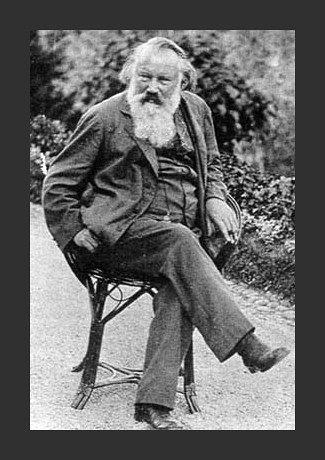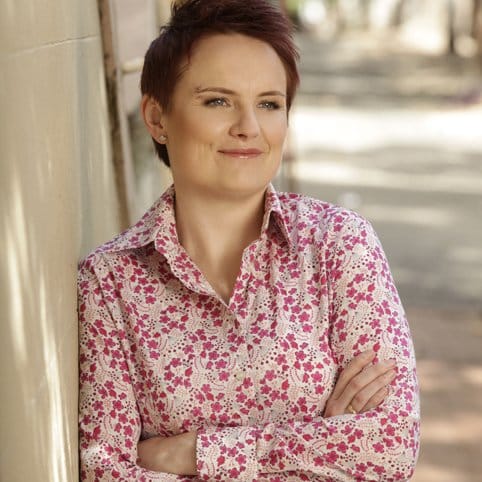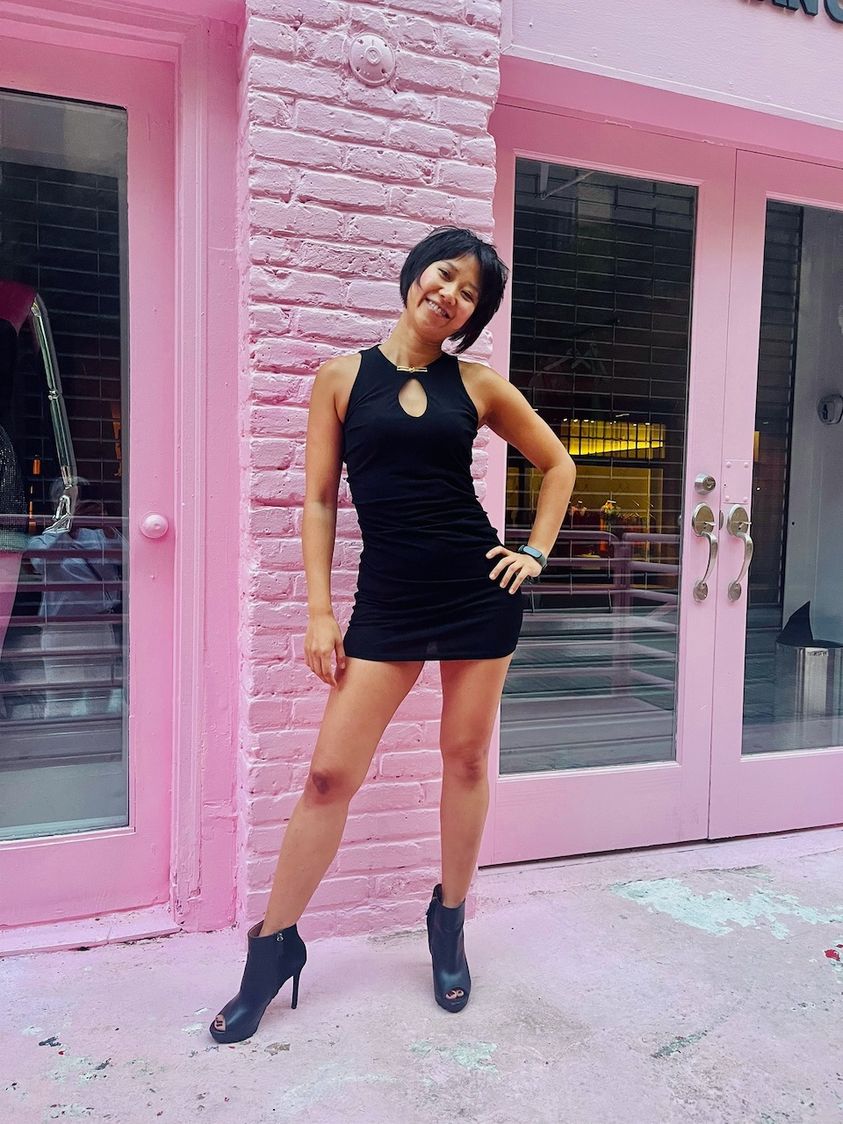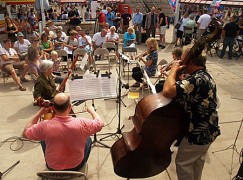The Slipped Disc daily comfort zone (55): Viola trumps clarinet
mainThe last Brahms sonatas were written for clarinet and piano, but a good viola wins that contest.


The last Brahms sonatas were written for clarinet and piano, but a good viola wins that contest.

The University of Illinois at Urbana-Champaign is in…

‘Tell me, Yuja,’ asks Professor Arieh Vardi in…

Musicians of the St. Paul Chamber Orchestra yesterday…

We have been leaked a PowerPoint plan that…

Session expired
Please log in again. The login page will open in a new tab. After logging in you can close it and return to this page.
Indeed…. it is a masterpiece that sounds better on the viola.
There is the scoring by Berio of this beautiful sonata, which brings-out the symphonic nature of the music – but it is not really done well – for instance, the little bit at the beginning that Berio thought was necessary to add, is particularly clumsy:
https://www.youtube.com/watch?v=0nQZOWpnFB4&list=FLMZN8RMao7SZonKbkgdui1Q&index=305
As a ‘concerto’, the solo part is not at all in the nature of a solo concerto. The music is too intimate for a concerto.
Am I alone in not having a taste for orchestrations of chamber music? Beethoven, Schubert, Brahms, even Barber’s adagio: no matter how interesting they may sound with a richer tone and more varied tonal palette, I miss the intimacy and transparency of chamber music.
Having performed both versions several times, I find that on the whole I actually prefer Schoenberg’s orchestration of the Brahms G Minor Piano Quartet to the original. In particular, the third movement is so orchestral and massive in its martial effects that the chamber group seems inadequate to its requirements. The music all but requires brass and percussion. And I absolutely love the xylophone in the last movement. I have yet to encounter any string player who agrees with me, though.
Yes, that Schoenberg orchestration is brilliantly done, but it is not in the style of Brahms’ way of scoring – too many frills.
I don’t think there is anything ‘wrong’ with the original version. all chamber music of Brahms has a symphonic character, the works are a music of interiority and thus their effects depend more on the imagination than on the literal sound. The same with Beethoven string quartets, by the way, which often suggest orchestral effects.
Perhaps the viola is the better instrument for the F minor sonata (op.120, no.1): there’s a vehemence, especially in the first movement, which is hard for a clarinetist to capture. But the E flat major sonata sits beautifully on the clarinet. The wind version is surely trumps there.
Here’s one violist (probably the only one) that absolutely agrees. I love playing the F minor; I much prefer listening to the E flat. And forgive me for saying this, but I just don’t get the last movement of the E flat; it never does much for me.
No it doesn’t. Sorry.
And the violist is … ?
Pinchas Zuckerman. Barenboim at the piano
Right click on the video and you can copy the URL for the youtube video. It’s Pinchas Zukerman and Daniel Barenboim. It would be a recording from perhaps the 70s.
Brahms wanted a clarinet and I love it.
Brahms wrote both versions, but first for the clarinet.
No. Brahms provided the viola version just in case his clarinetist would not be able to come on time.
Some people in Vienna’s music circles at the time claimed Brahms exercised a viola joke. I don’t think that was true.
Not.
What is autumnal and nostalgic with the clarinet become whiny and insistent with a viola.
Not when it is played with discretion, and not with sentimental Schmelz.
Depends on the violist–and the clarinettist.
Max speaks for me.
Also, both the Brahms are terribly difficult to play in tune on the French (Klose) clarinet and less difficult on the German clarinet (because of it’s acoustical characteristics).
Precious few clarinettists that I’ve ever heard play in tune let alone make music at the highest level with their duo pianist-partner.
It all seems to come down to the 2 musicians who are playing – not on which instrument it’s played.
Each to his own, but I prefer the clarinet versions. There’s a sort of amber “light” to them – maybe that’s what people refer to as nostalgia. A clarinetist of my acquaintance suggested that some of the difference is related the necessity of breath to a wind player. Not that viola players don’t breathe. I think.
Viola players DO breath, but deeper.
Definitely no! It is very unfortunate and even tragic to violists that for their almost ‘only’ repertoire, Brahms clearly said: ‘as viola sonatas, the two pieces are very awkward and unpleasant.’
Hindemith!!!
Brahms was inspired by what all accounts suggest was a marvelous clarinet player, Richard Mühlfeld. But his experience with violists might not have been quite so uplifting, as he assumed that a violist could not comfortably reach the heights that were in the clarinet original particularly in the Eb sonata. So down an octave it goes, yet he got hoist on his own petard because now the phrase goes too low for the viola. As a result hearing the viola part as Brahms wrote it can be frustrating when the viola part “pulls its punches.” This might account for the sour quote about awkward and unpleasant.
Most modern day violists restore those altered passages, so we have less familiarity with what Brahms did and experienced. I believe Lionel Tertis was the first to look to the original. And in his autobiography Tertis mentions that what Brahms did in his viola version gives a hint of the pathetic state of viola playing as recently (Tertis was born in 1876) as 1895.
I suspect that if Brahms heard Tertis (or Pinchas Zukerman) he would have had a higher regard for his own arrangements!
If Brahms heard me play them, he would say “See? See what I mean? Unpleasant as hell!”
Which reminds me that Brahms’s decision to make a viola part out of a clarinet part has seemingly inspired (or authorized) others to do likewise. The Mozart Concerto, and one or another of the Weber Concertos, are sometimes played on viola. And more to the point, Yuri Bashmet’s Melodiya recording of the Brahms Sonatas is filled out with Bashmet playing the op. 114 trio with him playing the clarinet part (beautifully) on viola. By the way Valentin Berlinsky plays the cello part so this is a disc worth seeking out.
When all the smoke has cleared, however, I hear more resignation and regret when the Sonatas are played on clarinet.
And having said that, I’d be irked if some clarinet player tried to reverse the process and muscled in on the two songs for alto voice, viola, and piano, op. 91. Back off, pal, that music’s ours.
All versions are absolutely valid. Sound perception is such a personal and intimate experience, therefore the discussion turns into taste and feeding the ego.
Given Brahms` relationship with “Fraulein Klarinette” (his words, not mine!), I remain somewhat… baffled as to why he never wrote a clarinet concerto. Did he, I wonder, see the instrument as best suited to more intimate music?
Micaelo: He didn’t have time to write a clarinet concerto. His works for clarinet are from the end of his life, when he took a particular interest in the instrument.
Played many times with clarinet-2nd mov. doesn’t fly
zzI first heard the F-minor sonata from Samuel Lifschey and Egon Petri on Columbia 78s, scratchy viola, clunky piano. I prefer clarinet and so evidently did Brahms. It was the clarinet that impelled him to write the trio, quintet, and two sonatas Op. 120 in a late creative burst after Op. 116-119 piano pieces, most tinged by the same melancholy, especially the C-sharp minor Intermezzo, Op. 117 No. 2. _Rubinstein, Gould, Pogorelich)..
˙His last music followed: eleven chorale-preludes for organ after J. S. Bach, ending with “OWelt, ich muss dich lassen”, “O World, I must leave thee.” Virgil Fox made the best organ version I’ve heard, and Paul Jacobs the best of Busoni’s piano transcriptions, which Jacobs called the hardest things he ever played.
Zukerman/Barenboim make a good case for viola, as did William Primrose with Kapell and Firkusny.
I’m with Flambeau about orchestral transcriptions of chamber music. Szell, even Bernstein and the VPO don’t convince me, only Furtwaengler’s Cavatina and “Grosse Fuge” by Klemperer or Furtwaengler with added strings and basses works for me. I particularly dislike Schoenberg’s elephantiastic job on Brahms’s G-minor piano quartet.
I used to try to play the second movement of the E-flat clarinet sonata. It sounds easy when you hear it, but the fingering on the clarinet keys is a bear. He seemed to be going out of his way to put in intervals which require great manual dexterity. Just listen to the beginning. C-natural to A-flat, B-flat, G-natural, F-natural, cross the register to C-natural, back to A-flat, all the time you’re also holding the instrument and keeping your thumb on the F-hole, it’s an arthritic mess, a practical joke worthy of Mozart.
It may sound well in a viola, but it can’t be as challenging and stimulating for the player.
The piano part is not easy as well, a real finger breaker.
Don’t forget Brahms actually wrote these two pieces for the German system clarinet.
Honestly, if you are not a clarinet player then you don’t know what you are talking about. Leave the opinions to those who truly know the work inside out, not the music critics who mistake ketchup-like vibrato for a greater interpretation.
LOL. Because instruments that use vibrato don’t use tone colors, dynamics, or rhythmic nuances. Only the clarinet has access to those means of musical expression.
Another work from the same period that has an alternative viola part is the gorgeous A minor trio with cello and piano. I have played this on the viola, and I found that it worked extremely well.
Yes, that is a wonderful masterpiece.
I dunno, I think both versions can sound wonderful. You just need a team with a virtuoso’s control over their instruments and a lot of musical depth. Both versions can also sound terrible.
On the “solo” side of things, there’s the risk of a scratchy, out-of-tune violist or a squeaky, out-of-tune clarinetist who may or may not have access to the deeper meanings of the music (but who cares because nobody can stand to listen to them); or a proficient technician who is able to manipulate their instrument into giving a polished rendition of the notes. On the piano side of things, you can end up with someone who is not up to the considerable technical demands of the piano part, or someone who treats it like a piano concerto, a vehicle for their virtuosity. Any of those combinations leads to a mightily unsatisfying performance.
I first heard this Zukerman/Barenboim recording in about 1980 when it was recent, and IMHO it has stood the test of time. The way all their recordings together from this period sound to me is that they were still relatively young performers, established in their careers but not yet calcified into their later “megastar” personas. Also they were musical equals, not a famous violinist with his lesser-known accompanist or a famous pianist/conductor with his latest protégé or young record company signee. (I recommend their recordings of the Brahms, Beethoven, Sibelius and Elgar concerti from the 70s/early 80s.)
Another wonderful recording on viola: Josef Suk and Jan Panenka.
https://www.amazon.com/gp/product/B07DC7KZ3L/ref=dm_ws_sp_ps_dp
Reginald Kell, among others, used clarinet vibrato to the sorrow of some, but he still played it like Kell.
I’m so used to agreeing with Flambeau that I wrongly attributed Petros Linardus’s dislike of orchestrated chamber works to the former, who may share the view anyway. It’s the second post here.
Max Raimi is ever the stalwart champion of the viola, which he knows as well as anyone. But I still like Brahms’s G-minor pf. quartet come scritto, and miss the piano otherwise. As for that third movement it ends in a free-for-all Cossack sword dance hopping and scramble, as shown by Rubinstein/Pro Arte, Rubinstein/Guarneri. Serkin/Busch and Edwin Fischer,– and most of all by the ive performance of Sven rReher and Kurt Reher with Leonard Stein that I heard long ago in the East L.A. YMCA and have never forgotten, or recovered from.
Proved again by Brahms in his earliet orchestral music, the second Serenade in A, which like one of Mehul’s operas uses no violins, just violas and down for strings. I love the viola too, Max, as nearest the human voice, but mainly for itself alone. Primrose, Lionel Tertis, Zukerman, Germaine Prevost, Walther, you, and that tall guy in the old Pacifica Quartet. Eyeglass Duo forever! I listened to Primrose and Feuermann play it yesterday.
Oh dear. This is exactly why I have been pushing Charles Neidich to do a recording of both Sonatas and the Trio, Op.114. In this short excerpt from his master class you can hear and see a replica of Richard Muhlfeld’s clarinet that inspired Brahms to compose all three clarinet masterpieces.
Charles Neidich and Robert Levin performed both Sonatas at Yale Collection of Historical Instruments (Robert for that occasion broght his 1868 Streicher Piano) and has been entertaining the idea of recording Brahms album for quite some time but stars have yet to align.
https://youtu.be/mKYH4vZzqDk
Here is another excerpt from my own recital six years ago where I performed both sonatas with 1871 Streicher.
https://youtu.be/_ASQ1ygc9j8